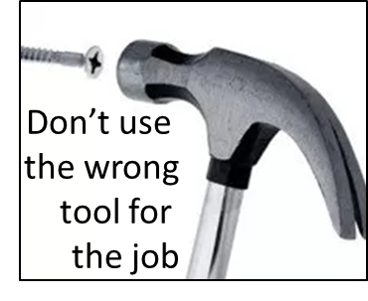Search Waypoint Resources
Why are you using a B2C approach and solution for B2B Customer Feedback?

If your company sells products and services to other businesses (B2B), are you confident that your customer engagement process is utilizing an effective B2B approach? Many companies make the mistake of relying on their own experiences as consumers to implement “survey” programs in their businesses. But B2B is a completely different structure than B2C, and you’re most certainly missing out on important benefits if you’re using traditional consumer approaches in your B2B organization. Yes, B2B is more complex so it might be tempting to think like a consumer, but in doing so you’d be obviating critical benefits from your program. Here are some of the critical differences between a B2B- and a B2C-oriented feedback/NPS program:
|
|
B2C |
B2B |
|
Why gather feedback? |
Customer happiness to accelerate positive customer word-of-mouth:
|
Strengthen customer relationships to
|
|
From whom will you acquire |
The person that interacted with the experience | Various people based on the role (persona) of the different contacts in the account:
|
|
What feedback to acquire and |
Aggregated results by segment (where segments are divided into different channels / treatment strategies and products). Examples:
|
Account-level (1:1) and also Aggregated by segment (1:Many). Examples:
|
|
When to get feedback? |
Significant steps in the customer lifecycle (sales & ordering, receive and use, support, return/upgrade) | Relationships trump individual experiences, and relationships are based on meeting customer expectations throughout their lifecycle:
For example, the outcome from an End User for interacting with your product *should* be that their jobs are made better/easier. An outcome of using the product is NOT if they are satisfied (a very low bar — ‘satisfaction’ isn’t why companies buy from you — they want outcomes!) or likely to recommend your company (a brand attribute, not a product attribute) |
|
How to collect feedback? |
Provide a survey and ensure a statistically significant number of responses for any given segment (i.e. a representative sample per segment). | Utilize CSMs, Account Managers, and Sales (i.e. the people that should have a relationship with the given contact) to help request and act on feedback in pursuit of strengthening relationships. This can be automated or high-touch, but needs to be used to engage the contact to drive improvement (i.e. not a “survey” that is just for measurement, but instead a request for feedback that will be acted upon to drive the right improvements for the customer contacts). Consider:
|
|
Where to capture feedback? |
During the experience, or shortly following a given experience. However, you must consider the customer’s complete lifecycle in the experience. For example, when a customer contacts you for Customer Service, the right time for feedback about the call center could be immediately following the call. But the right time to get feedback about the extent to which you resolved the customers’ issue could be days or weeks following the interaction (for example, if the customer was calling regarding a billing issue then the time for feedback is following the next bill). |
For example, you conduct “onboarding” processes to ensure that customers are effectively positioned to get the results (outcomes) they expect. That is, an “onboarding” experience isn’t about their satisfaction with the onboarding processes, but instead should be about the customers’ ability to utilize your products and services to do their job following the onboarding phase. Therefore, continuing this example, collecting feedback about onboarding needs to occur within a sufficient time following the onboarding phase to make sure there are no gaps or concerns. AND the “onboarding” phase needs to be CONTINUALLY re-utilized as new employees come and go – both end users that might not have received the initial training and also decision makers, since they can come and go and have changing requirements around business strategy or outcomes. |
TopBox is a cost-efficient SaaS solution made for B2B companies that complements your CRM (e.g. Salesforce) and/or Customer Success platform (e.g. Gainsight, Totango, ClientSuccess) with unmatched visualizations and data collection techniques, providing powerful insights to optimize priorities and actions across your company. Among other capabilities, TopBox
- Measures effectiveness of the individual and aggregated customer journeys and overall relationships, pinpointing optimal areas of focus
- Allows CS team to engage internal cross-functional teams to drive the right improvements
- Enables CSMs to strengthen customer relationships by driving the right customer interactions, including more effective QBRS
We’re happy to show you a demo so you can (literally!) see what you’ve been missing by not having TopBox visualizations.